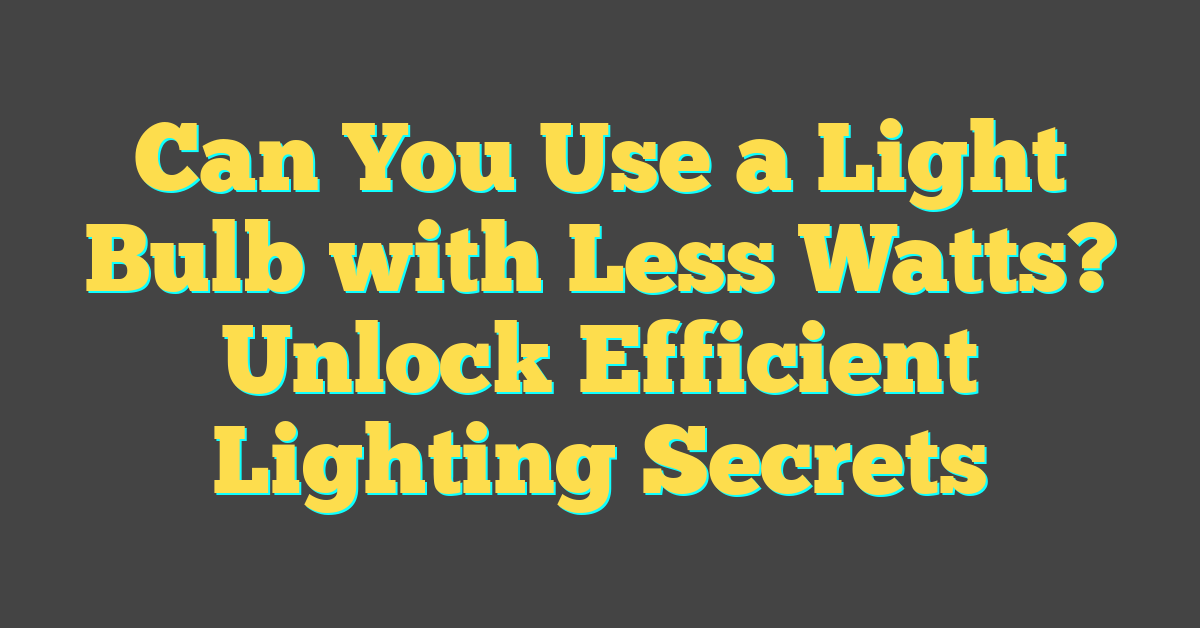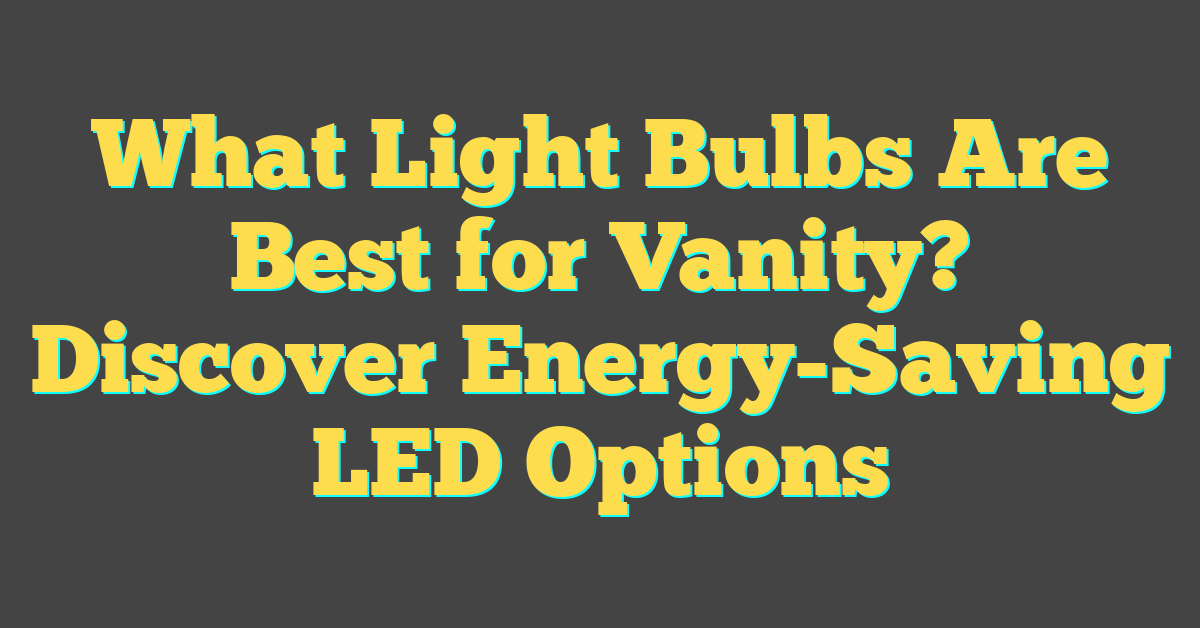Light bulbs are an everyday essential that illuminate our homes, workspaces, and the streets we walk on. Understanding the parts of a light bulb is not just for electricians or industry professionals; it can be helpful for you too. Knowing what goes inside the seemingly simple glass sphere can empower you to make better choices when purchasing bulbs and even troubleshoot basic issues.


Each light bulb is a complex assembly of parts working in harmony to produce visible light. At the heart of many bulbs is the filament, a slender thread of material that glows when electric current passes through it. Surrounding the filament is the bulb itself, a glass enclosure that provides protection and ensures the longevity of the internal components. The base of the bulb is the part that connects to the power supply, enabling electrical circuits to energize the light.
Key Takeaways
- A light bulb’s key components include the filament, glass enclosure, and base.
- Understanding bulb parts aids in making informed purchasing and troubleshooting decisions.
- Light bulbs convert electrical energy into light energy with various levels of efficiency and environmental impact.
Historical Development

The journey of the light bulb began way back in the early 19th century when Humphry Davy introduced the first electric light. Davy invented the electric arc lamp known as the Davy lamp, and your modern world owes quite a bit to his pioneering work.
Moving forward, the Geissler tube, a glass tube that emitted light when subjected to an electrical current, represented another early step towards your electric lamps of today. This was created by the collaborative effort of Heinrich Geissler and Julius Plücker.
Later, in the late 19th century, Thomas Alva Edison made significant improvements by experimenting with various filament materials. His persistence gave birth to a bulb with a carbon filament version that had a 13.5-hour lifespan. Edison’s work led to the widespread commercialization of electric light bulbs, making it easier for you to simply flip a switch and light up a room.
Here’s a snapshot of the progress:
- 1800s: Humphry Davy’s electric arc lamp
- Mid-1800s: Geissler tube development (The History of the Light Bulb | Department of Energy)
- Late 1870s: Thomas Edison began his experiments
- 1879: Edison’s successful bulb patented on Nov 4, 1879 (The History of the Light Bulb – The Edit by Lumens)
Your everyday lighting owes its existence to these innovators. They paved the way for the evolution of the light bulb, which has brightened lives for over a century now.
Light Bulb Types and Functions
https://www.youtube.com/watch?v=EalpCR4NV7U&embed=true
Understanding the different light bulb types and their functions is essential for selecting the right lighting for your needs. Each bulb type offers unique features and is designed for specific applications.
Incandescent Bulbs
The traditional incandescent light bulb produces light by heating a wire filament to a high temperature. These bulbs are known for their warm, inviting glow and are often used in homes for general lighting. However, they’re less energy-efficient compared to other types.
Fluorescent Bulbs
Fluorescent bulbs generate light when an electric current excites mercury vapor inside the bulb, which in turn produces ultraviolet light that causes a phosphor coating to glow. They are more energy-efficient than incandescent bulbs and are typical in commercial settings or for task lighting.
LED Bulbs
LED bulbs (Light Emitting Diodes) are highly efficient and have a longer lifespan than most other types. They work by passing an electrical current through a microchip, which illuminates the tiny light sources. You’ll find LED bulbs suitable for a variety of uses, from residential to industrial.
Halogen Bulbs
Halogen bulbs are a type of incandescent lighting that are more efficient and have a longer life than traditional incandescent bulbs. They produce a bright, white light and are often utilized in vehicle headlights, under-cabinet lighting, and work lights.
Basic Components of Light Bulbs
« Light Bulbs with 2 Prongs: Choosing the Right Fit for Your Fixtures
Light Bulbs with Prongs: The Ultimate Guide for Easy Installation »
https://www.youtube.com/watch?v=YnMP1Uj2nz0&embed=true
When you flick on a light switch, it’s easy to take for granted the intricate parts working together within a light bulb. Let’s take a closer look at the basic components of light bulbs that illuminate your space.
Base: The base is the lower part of the light bulb that connects to your lamp or light fixture, providing a stable support and electrical connection. It often consists of metal contacts which are small pieces of metal that touch the power source to create an electrical circuit. Learn about the metal base.
Bulb/Glass Bulb: This is the rounded exterior you’re most familiar with. It’s made from glass and protects the inside parts of the bulb while allowing light to pass through. The glass can either form a vacuum or be filled with inert gases to protect the filament. Discover the purpose of the glass globe.
Filament: Positioned at the heart of the bulb, the filament is a fine wire typically made from tungsten due to its durability and high melting point. When electricity flows through it, it heats up and emits light. Understanding filament function.
While these are the core components, remember that light bulbs might include additional parts serving various purposes. For example, the stem in a bulb helps hold the filament in place, and gases inside the bulb can alter efficiency and light quality. Your everyday light bulb is a nifty piece of engineering—and now you know its key components!
Electrical Characteristics
In this section, you’ll uncover how the electrical components of a light bulb work in harmony to provide light. Let’s light up our understanding of the electrical principles that allow a light bulb to function effectively.

Electricity and Current Flow
When you flip the switch to turn on a light bulb, electricity – a form of electric energy – starts to flow. This flow, known as electric current, travels through the bulb’s metal contacts and into a filament, the heart of the bulb where light production takes place. Here’s a quick snapshot:
- Voltage across the bulb creates a difference in electric potential that drives the flow of current.
- The current then moves through the filament, completing the circuit and allowing the energy to convert into light.
Resistance and Efficiency
Now, consider the resistance your light bulb presents to the electric current. This resistance is crucial as it determines how much electricity is converted into light versus heat. An ideal light bulb has high efficiency—more light for less power consumed.
- Resistance is not futile in a light bulb; it’s the key to brightness! The filament, often made of tungsten, resists the flow of electricity, heating up to the point of glowing.
- Efficiency is often a trade-off. Traditional incandescent bulbs aren’t very efficient, converting only about 5 to 10% of the consumed energy into light, while LEDs can turn about 60% or more into light.
Remember, it’s the intricate dance between current, resistance, and voltage that decides the efficiency and brightness of your light bulb. By understanding these concepts, you’re equipped to make enlightened choices about your lighting needs.
The Importance of Gases in Bulbs
https://www.youtube.com/watch?v=4gw_NGePfG4&embed=true
Your light bulbs last longer and perform better than you might expect, and that’s largely thanks to the invisible gases inside.
Role of Inert Gases
Inert gases play a crucial part in prolonging the lifespan of your light bulbs. These gases, present in the bulb, prevent the tungsten filament from deteriorating too quickly. Without these gases, your bulb’s filament would oxidize rapidly when heated, leading to a much shorter lifespan. Essentially, inert gases create a controlled and conducive environment for the filament to glow brightly for longer.
Specific Gases Used
The most commonly used gases in light bulbs are argon, nitrogen, and xenon. Argon gas is favored due to its low cost and non-reactive nature, which is perfect for protecting the tungsten filament. Nitrogen, often mixed with argon, further reduces the rate of filament evaporation. In certain specialized bulbs, xenon is used which has the added benefit of producing a white light that closely mimics natural daylight. For more energy-efficient bulbs, like fluorescent lamps, mercury vapor is used, which has the unique property of conducting electricity to create light.
By selecting the right type of gas, manufacturers are able to enhance the efficiency and color rendering of your bulbs, ensuring an optimal lighting experience for you.
Bulb Design and Durability

In the realm of light bulbs, your choice can impact both the longevity of your bulb and the safety of your environment. Design and materials play a pivotal role in safeguarding the bulb from external factors like dust and moisture while optimizing performance.
Bulb Shapes and Sizes
The glass bulb is the most visible component, designed into various shapes and sizes to suit different lighting needs. For instance, the classic A-line (A19) bulb is versatile for general use. On the other hand, shapes like the BR (bulged reflector) cater to flood lighting, providing broader beam angles. When considering durability, specific filament shapes can affect light bulb lifespan, such as the spiral design found in compact fluorescents (CFLs), which offers better light distribution and efficiency.
- A-line (A19): Excellent for ambient lighting, fitting a vast range of fixtures.
- BR (Bulged Reflector): Ideal for outdoor and recessed lighting with a wide beam spread.
- Spiral CFLs: Known for their compact shape and energy efficiency.
Safety Features
Safety in lighting has evolved significantly to minimize risks associated with light bulbs. The housing of a bulb incorporates features aimed at preventing overheating and the potential for breakage. For instance, some bulbs are encased in a shatterproof coating to keep the components intact and provide an additional layer of protection. The inert gas inside the bulb also plays a critical role, as it prevents the filament from oxidizing too quickly, which can lead to premature burnout.
- Shatterproof Coating: Adds durability and safety, especially in high-traffic areas.
- Gas filled bulb: Protects the filament and extends the life of the bulb.
Remember, while you’re making your selection, the design and safety elements of light bulbs will dictate not just how well they illuminate your space but also how they stand up to daily wear and tear.
Light Production Mechanics

In the delicate dance of light production inside a light bulb, you play witness to the fundamental principles of physics at work. Let’s break down exactly how this process unfolds within the components of a light bulb.
Filament Operation
The filament is the heart of a light bulb, often made of tungsten metal due to its high melting point and durability. When you switch on a light, electrical current flows through the filament, causing it to heat up. This heat gets the electrons in the tungsten atoms excited, bumping them up to a higher energy level. As the electrons return to their original state, energy is released in the form of photons, the basic units of light.
- Electrical current flow: Causes heating
- Heat: Excites electrons
- Excited electrons: Release photons upon returning to normal state
Photons and Light Emission
The emission of photons is what provides you with light. In a process that almost feels like magic, the excited electrons spring back to their lower energy states after being heated. This transition emits photons, which you see as visible light. The light output of the bulb is directly related to the number of photons produced by the tungsten filament. The efficiency of this process is what determines the brightness of the light you receive.
- Electron transition: Causes photon emission
- Visible light: Photons perceived by the human eye
By understanding these mechanisms, you gain insight into the beautifully intricate system that illuminates your world at the flick of a switch.
Bulb Bases and Fittings
https://www.youtube.com/watch?v=vOAU8iAYmhQ&embed=true
When selecting a light bulb, understanding the base and fittings ensures you choose the right one that will fit your lighting fixture and provide the necessary electrical connections.
Types of Bulb Bases
There are several different types of bulb bases you’ll encounter, each designed for a specific fixture type:
- Screw Bases: The most common base, the Edison screw base comes in several sizes, including E26/E27, E12/E14, and others.
- Bayonet Bases: Identified by their push-and-twist action, bayonet bases such as B22 are prevalent in certain countries.
- Pin Bases: Including bases like GU10, these have two pins that plug into the fitting.
- Wedge Bases: Smaller bulbs, like those often used for automotive or indicator lights, feature wedge bases for simple insertion.
Electrical Connections
A bulb’s base not only holds it in place but also provides the electrical connections needed to power the bulb. Here’s how they function:
- Metal Base: It acts as the conductor between the bulb’s filament and the power source.
- Stem: The part of the bulb that extends to form the metal base and is crucial for the physical and electrical connection.
- Connection Points: On an Edison screw base, the threads and the tip of the base serve as neutral and hot connectors, respectively.
Familiarizing yourself with these components ensures that you make informed decisions when exploring lighting options like [light bulb base types] (https://www.familyhandyman.com/list/light-bulb-base-types/) and [light fittings, caps, and bases] (https://blog.lightbulbs-direct.com/your-guide-to-light-fittings-caps-and-bases/).
Electrical Circuits in Lighting
https://www.youtube.com/watch?v=NjgxXcBfIII&embed=true
An electrical circuit is the pathway through which electric current flows, and it’s essential in powering your light bulbs. A circuit is usually composed of wires that connect various components and allow electricity to flow from the power source to the lighting device and back.
When you switch on a light, what you’re really doing is closing the electrical circuit. The current—a stream of electrons—then flows through the wires and into the light bulb. In an incandescent bulb, this current passes through support wires and reaches the filament, causing it to heat up and emit light.
Circuits can come in different configurations, with the simplest being a series circuit. In such a setup, if one bulb breaks or is removed, the circuit is interrupted, and all bulbs go out. Here is how a straightforward lighting circuit connects:
- Battery/Power Source ⇨ Wire ⇨ Light Bulb ⇨ Wire ⇨ Battery/Power Source
To keep your lighting reliable and effective, your home most likely uses parallel circuits, allowing each bulb to operate independently. Hence, if one bulb fails, the others continue shining brightly.
Remember, safety is paramount when handling any electrical equipment or dealing with circuits. Always ensure your hands are dry and, if unsure, consult a professional electrician for assistance with your lighting circuits.
Color and Brightness
https://www.youtube.com/watch?v=CT_sUpbGdVs&embed=true
When you’re looking for the perfect light bulb, brightness and color temperature are two terms you’ll often encounter. Brightness is measured in lumens; the higher the lumens, the brighter the bulb. In the world of LED lighting, you won’t be measuring brightness by watts but by this lumen scale, which gives you a clear understanding of how much light you will get.
Color temperature is measured in Kelvin (K) and refers to the color of light the bulb emits. It ranges from warm to cool:
- Warm Light: 2700K – 3000K
- Cool Daylight: 5000K – 6500K
A higher Kelvin rating means cooler, bluer light, while lower means warmer, yellower light. This is similar to the natural progression from dawn to midday and then to dusk.
| Kelvin Range | Color |
|---|---|
| 2700K – 3000K | Warm White |
| 5000K – 6500K | Cool White |
In terms of energy efficiency, LED bulbs are champions, consuming less electricity and resulting in lower energy bills. Their lifespan is impressive, often lasting for thousands of hours longer than traditional incandescent bulbs.
LEDs also offer excellent light distribution, making them a good choice for both directional and diffused lighting setups. When selecting a bulb, consider the light output needed for your space, whether it’s a cozy corner or a home office.
Remember, the parts of a light bulb work together to affect the quality of light. The diode in LEDs, for example, impacts energy efficiency and lifespan, while the design can influence light distribution. Choose wisely to create the perfect ambiance for your space!
Environmental Impact and Efficiency
https://www.youtube.com/watch?v=RsDgjKj014U&embed=true
When you switch on a light bulb, you might not think about the environmental impact it carries. But, your choice can make a difference. Traditional incandescent bulbs consume more power than they need to produce light. This is because tungsten filaments inside them get incredibly hot to emit light, which mostly ends up as wasted heat. Specifically, only 2-3% of the energy used by incandescent bulbs is turned into visible light.
However, with energy efficiency being a critical factor in today’s world, many of you have probably transitioned to fluorescent lamps or LED bulbs for your home and commercial lighting. Fluorescent bulbs, for instance, convert about 70-80% of their energy into light, making them much kinder to the planet.
| Bulb Type | Efficiency | Waste Heat |
|---|---|---|
| Incandescent | Very Low (2-3%) | High |
| Fluorescent | High (70-80%) | Moderate |
The performance of these energy-efficient alternatives is just as bright—if not brighter—than traditional bulbs, and they reduce the amount of electricity needed. This means by choosing greener options, you are contributing to lower carbon emissions. Plus, you get to enjoy a reduction in your electricity bills!
So next time you’re shopping for bulbs, remember you have the power to influence not only your energy consumption but also the well-being of our environment. Your choices lead to a brighter and more sustainable future.




